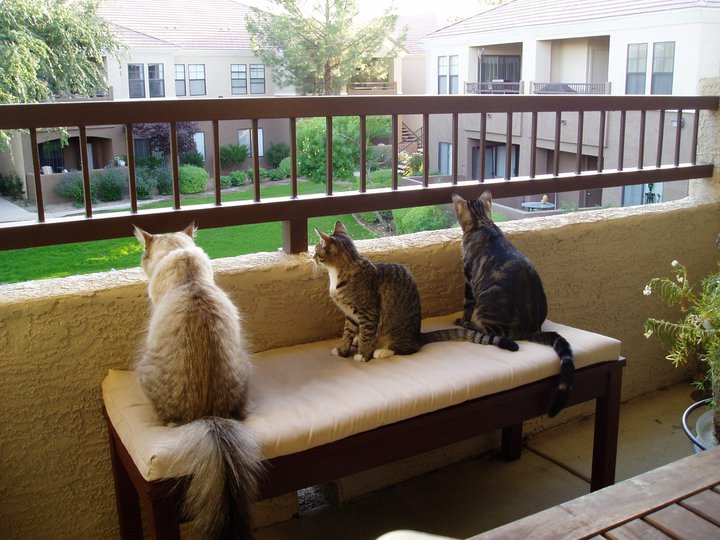I have 3 cats that keep my heart full and happy, but I’ll be honest that sometimes it gets a little dicey–especially when we relocate to new places with other animals. Keeping the peace is always the goal, but not always easy to accomplish.
When it comes to pet management, I’ve read books and articles, spoken to the experts, and implemented a lot of practice. In general, I have a pretty decent idea of how to work with animals around those less-than-desired things that sometimes pop-up; litter box issues, health troubles, getting-along-with-each-other dilemmas. Sometimes though, I still run into a wall and wonder “what do I need to do in order to make this work better?”
Insert those amazing, skilled, intuitive people that have a remarkable way of connecting and communicating with animals. It may sound far-fetched, but it’s more legitimate than many might realize.
I had a friend with 3 dogs who was having difficulty maintaining their health and harmony. She was taking all the responsible pet owner actions, modifying their diet, taking them into the vet, spending extra time and care at home – but still the problems were happening. She was then introduced to Gail Peeler, an Animal Communicator, and was delightfully awed at the results from their session together. By working with Gail, she learned more pertinent information regarding the situation and was able to modify it appropriately. Her success was testimony to me that I should also contact Gail to see if her work could help me and my cats.
I reached out to Gail and that decision was one of my best yet! I wasn’t sure what to expect, but kept an open mind. She started the session with beautiful rhythmic drumming (which helps shift her brain into a different state that facilitates this kind of work) and continued the opening ceremony by calling in helpful guides and honoring the different directions (very similar to Native American tradition). When she began describing my pets to me with incredible accuracy, I knew it was the real deal. She doesn’t ask for any information other than the age of the animal and a clear picture of their eyes, which helps her connect with the animal directly.
My main concern when I contacted Gail was the growing disharmony amongst my 3 fur babies. I wasn’t willing to let go of anyone, since I am completely committed to keeping them all in my care. However, the hissing and clawing around the food dish and territorial dominance of certain areas in the house were inappropriate. None of my efforts to regulate the situation or help them get along together seemed to be working. When I spoke with Gail, she asked “is Little not getting enough food? She’s telling me that Tiger Lady doesn’t let her eat” – well yes, that was true! So she had a little talk with Tiger Lady about it. She then went on to say, “do you have any of the crunchy treats for Little? She likes the crunchy treats.” I was shocked! I had been buying the soft chewy treats and wondered why my cat Little didn’t want to eat them. I thought she just didn’t like treats. Turns out animals can be particular to textures, too! I switched to buying crunchy treats and now she eats them.
As another example, I previously had three different water bowls but recently switched to using only one. Gail said, “do you have just one water bowl? They’re asking for another one so they don’t all use the same one.” Working with Gail gave me specific strategies to implement based on what my cats were needing and wanting. She took the guesswork out of it, at last! As Gail will say herself, “each animal is completely unique, no two of them are the same.” Sure, sometimes cats will be cats, and it’s very clear that even animals cannot be forced into doing things (or not doing things). One thing consistent in Gail’s work is an ever-present honoring and accepting of the animal exactly the way it is, while encouraging certain behavior that is more preferred. Animals can be very sensitive, much like people, and very often just want to be loved and accepted the way they are. Once they are provided that unconditional love, (and this is true in my experience) then they are likely to be more accommodating.
In a sense, working with an Animal Communicator is sort of like having a translator to help clear up any misconceptions, reiterate goals, objectives, and/or preferences in an understandable way (for both animals and humans!) and to assist in establishing some common ground.
Gail’s training has allowed her to facilitate healing also (yes, from a distance!) – meaning that areas of physical ailment can come into awareness and be addressed energetically. This may sound odd or unlikely, but because the mind and body are inter-related, the link between energy and physicality has now been well established. (check out some science to support this here: https://www.nlm.nih.gov/medlineplus/magazine/issues/winter08/articles/winter08pg4.html ) The mind can effect the body and vice versa. There have been many cases where Animal Communicators bring attention to a health complication the animal is reflecting and sure enough, when pet owners take their beloved pet into the vet, the issue is confirmed! This early-awareness detection can be so helpful to alleviate conditions more quickly and effectively.
A note of caution about expectation, though: working with an Animal Communicator doesn’t guarantee the problems will be resolved or that a health condition can be healed. Sometimes things happen for reasons beyond our control. However, if you’re looking to better understand an animal, or wish they could better understand you, then this is definitely an avenue worth exploring.
For more info about Gail Peeler and her services, visit: http://www.gepeeler-animalthoughts.net/
Watch an Animal Communicator in action here: https://www.youtube.com/watch?v=gvwHHMEDdT0
More pet tips: 10 Natural Pest Prevention Tips
Also by Jen: 8 Ways to Kick Cold and Flu Bugs
__
Photo: Jen Awdry


